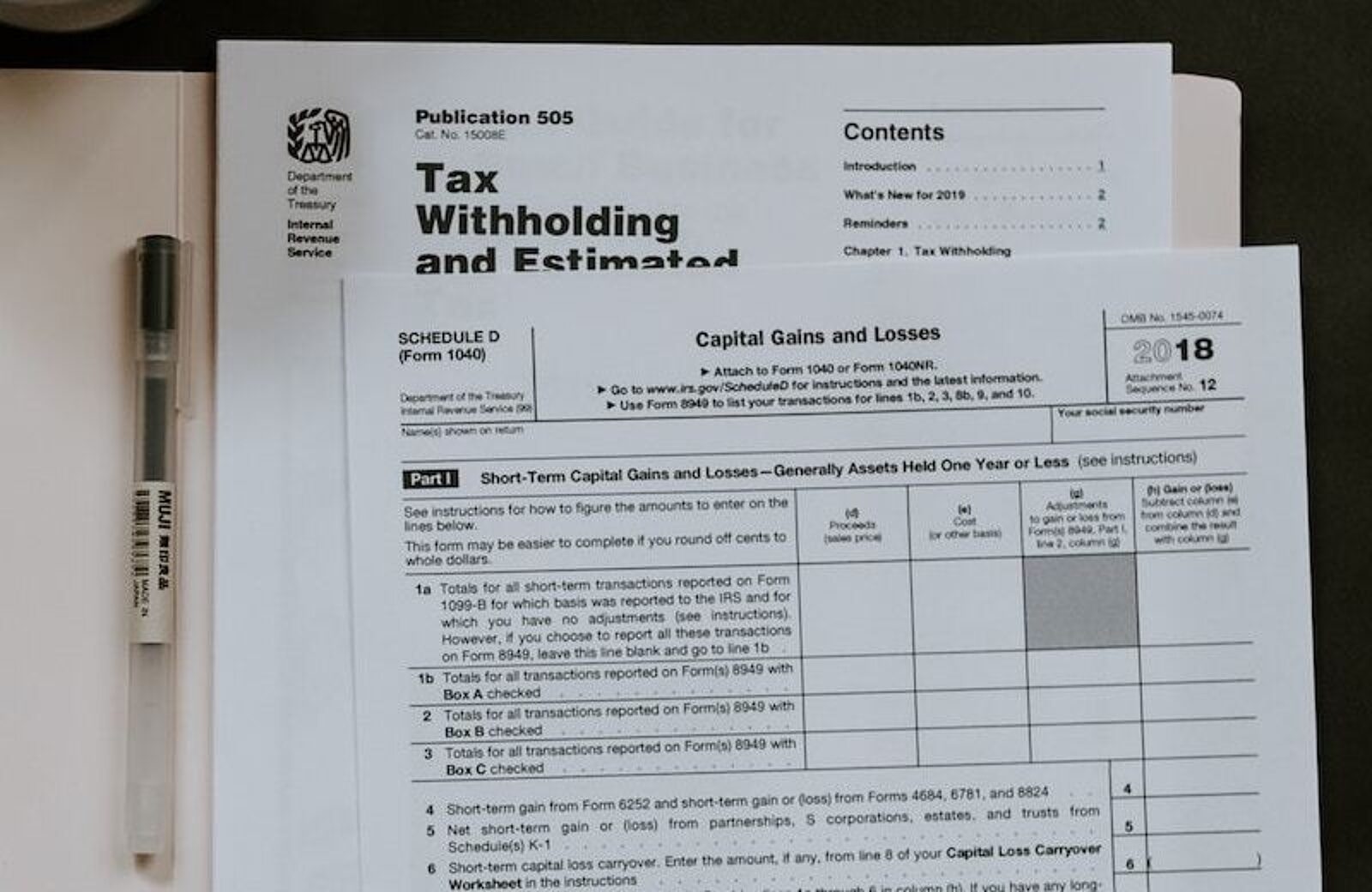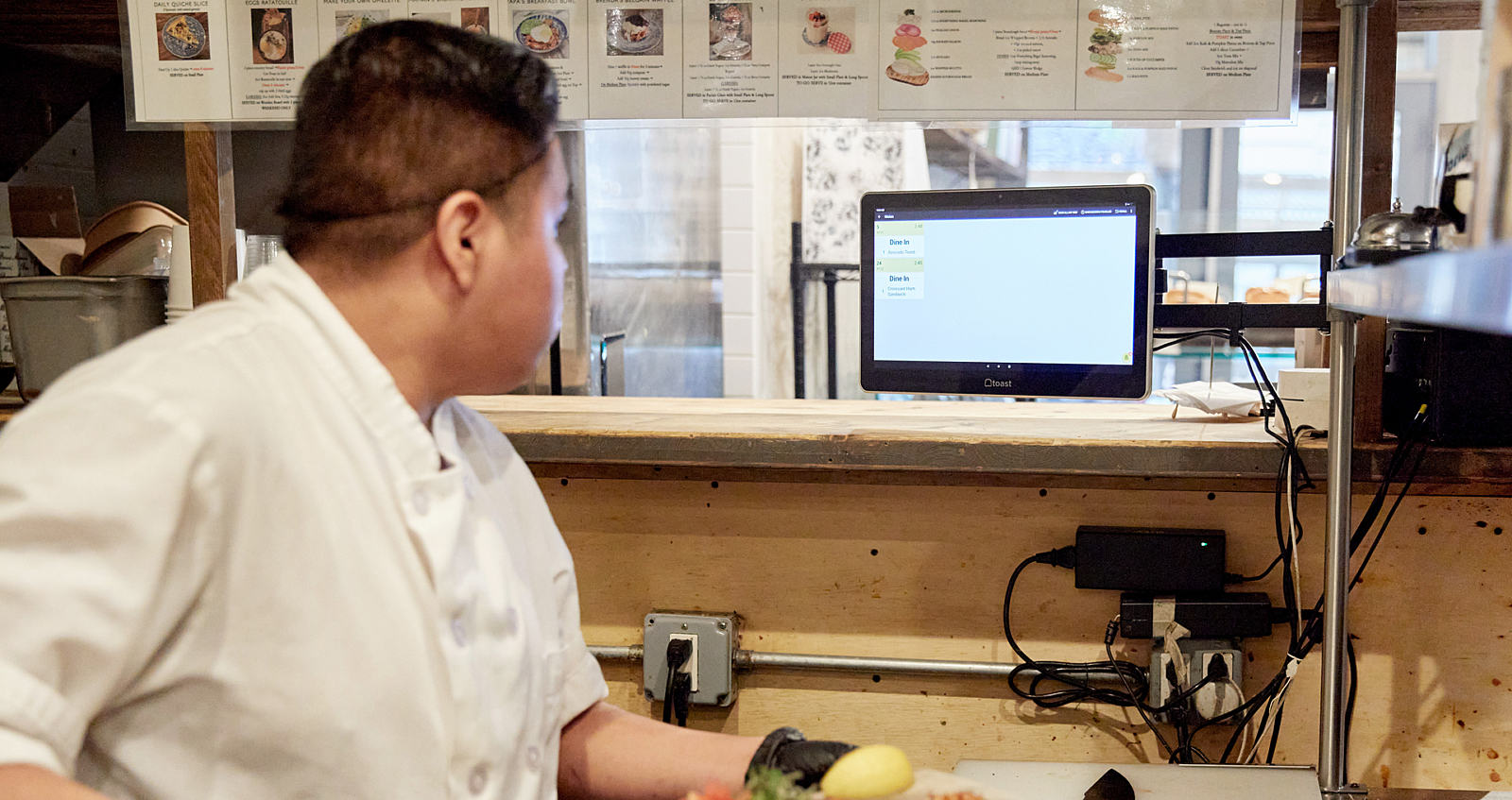
6 Types of Sustainable Technology That Help Restaurants Reduce Paper and Food Waste
A few simple steps can go a long way to reduce your restaurant's carbon footprint. Read below to learn more.

Tessa ZuluagaAuthor
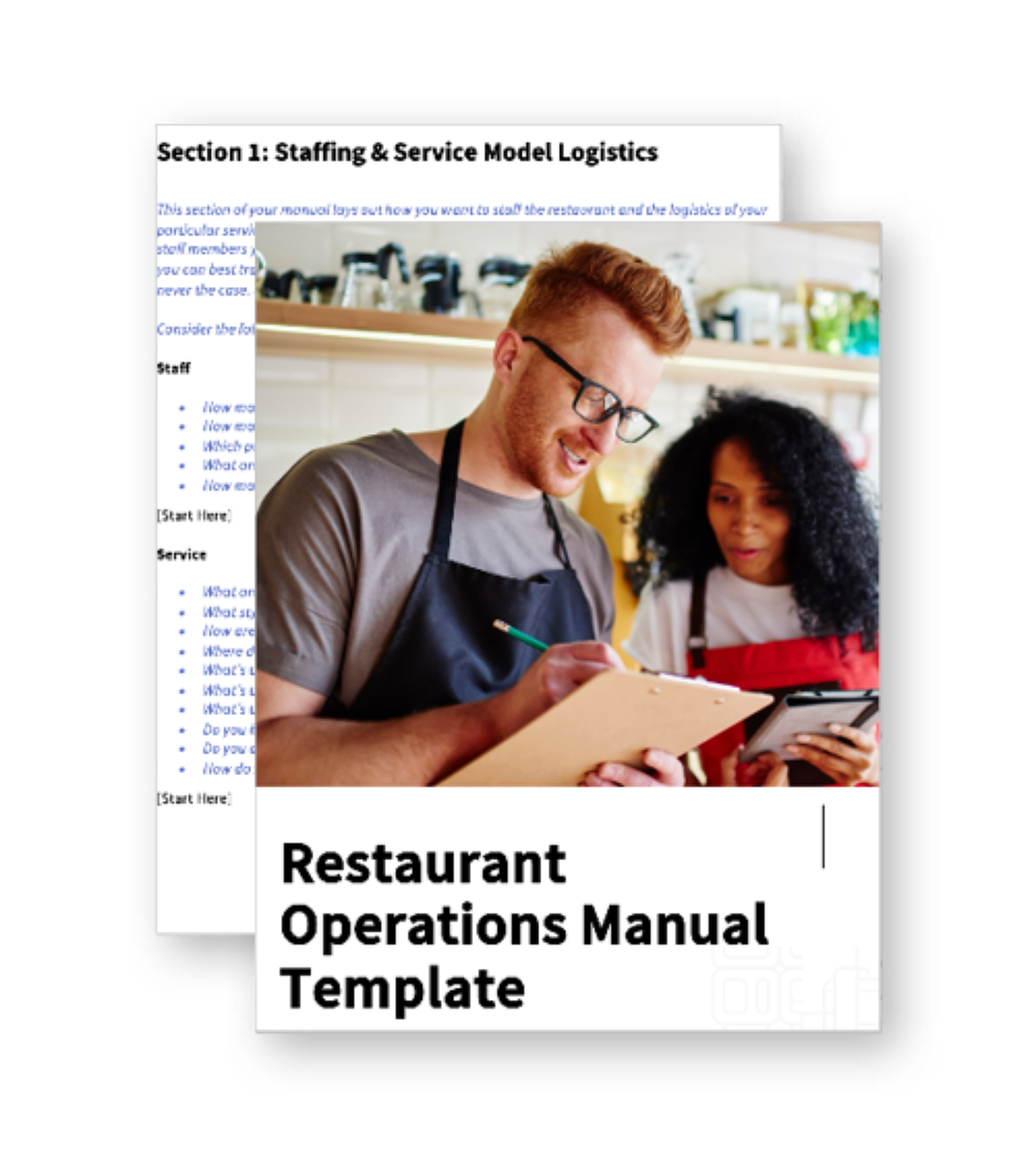

Restaurant Operations Manual Template
Use this free template to easily outline all of your operating procedures and make day-to-day operations as consistent as possible.
When restaurateurs hear the term “sustainability,” they often think of reducing food waste, composting, renewable energy, incorporating farm-to-table options, and recycling or upcycling, all of which aim to eliminate unnecessary waste and reduce a restaurant’s carbon footprint.
In fact, in the US, around 84.3% of unused food in restaurants is thrown away while only 14% is recycled, and only 1.4% is donated. According to the Green Restaurant Association, a restaurant can produce up to 25000-75000 pounds of food waste a year.
Besides adopting the above environmentally-conscious strategies into your restaurant operations, investing in restaurant-specific sustainable technology can help restaurants from food trucks to fine dining reduce their carbon footprint, and improve their environmental impact.
What Is Sustainable Technology?
Sustainable technology reduces waste while maintaining efficiency. Paper waste and food waste are just two of the many areas of restaurant operations whose volume can be managed and reduced with the help of restaurant technology solutions like payroll and employee management software, kitchen display screens, guest-facing point of sale technology, and an integrated customer relationship management (CRM) solution.
"In the end, you’ll find that sustainability means spending less, saving more, and looking great to even the pickiest of consumers." - QSR Magazine
1. Guest Facing Point of Sale Technology
Deforestation – the act of cutting down of trees to make paper and other materials – is destroying the environment, and negatively impacting the future of wildlife, ecosystems, and even the weather. The restaurant industry alone contributes to 1.5 billion pounds of paper waste annually – just in receipts. Add in menus, gift cards, paper billing to and from vendors, single-use napkins, paper-based payroll systems, and paper checks to employees and the amount of paper waste produced by restaurants is staggering.
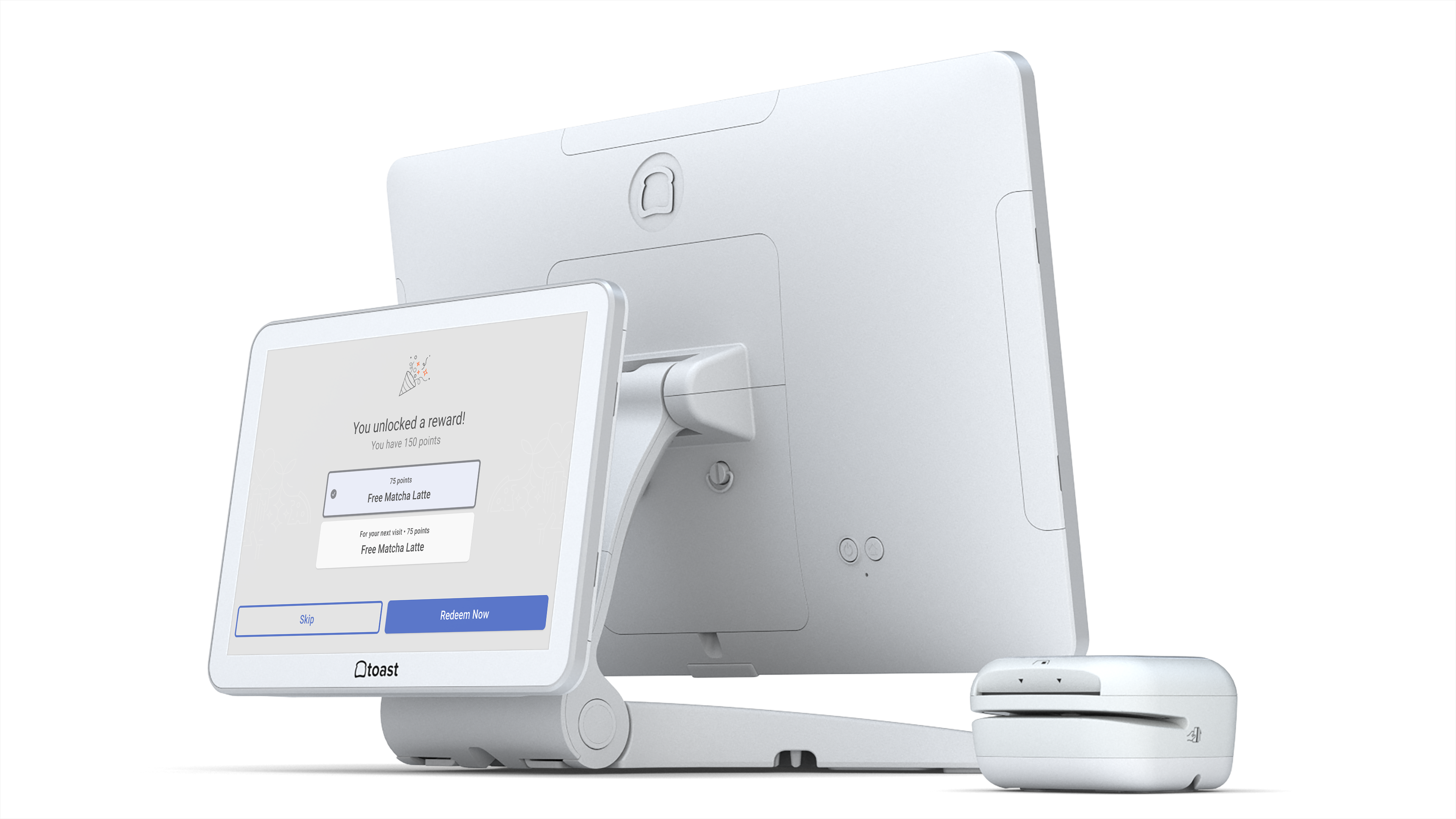
Did you know that a paper receipt can cost up to five cents apiece and as many as 93 percent of these receipts may not be eligible for recycling due to the dye that’s used to improve legibility? Not to mention how harmful receipt paper can be for humans to touch. Unfortunately, the most common replacement chemical in receipt paper is BPS (bisphenol S, or 4,4′-sulfonyldiphenol) – a substitute that appears to be at least as detrimental to human health as BPA.
Spinelli’s Pizza in Tempe, Arizona took the leap with all-digital receipts and did not see any impact on sales or customer loyalty. Owner Christoper Palma says, “I’ve used tech to help cut down on paper waste. We offer online ordering through our own app, which offers paperless receipts and coupons.”
Remember, any impact you have may seem small but it can have long-term implications and apply to your sustainability goals. “I would like to think our customers care. But we as a business care,” says Palma. “I think it’s more important now than ever to make sure we conduct business in a manner that leaves the planet in better condition for the generations to come.”
The national “Skip the Slip” initiative and report by Green America details the environmental and health impacts of paper receipts. Hot off the heels of the 2023 grassroots movement to reduce the public’s dependency on single-use plastics by discouraging the use of plastic bags, plastic straws, plastic cutlery, and styrofoam takeout containers, the Skip the Slip campaign may be responsible for soon rendering the paper receipt obsolete. Companies outside the hospitality sector are adopting cloud-based expense processing systems like Expensify, which eliminates the need for paper invoices and paper-reliant payment processing.
In quick-serve and fast-casual restaurants, self-service kiosks have gone from novel to commonplace. Tablet-based ordering may take a while to catch on in fine dining establishments, but they offer substantial benefits beyond reducing paper waste, including the ability to make and push out menu changes on the fly, list and update nutrition facts and allergy details, and adjust prices for hourly specials or a happy hour menu.
Using kiosks or tablets to facilitate ordering in your restaurant also reduces the chance of human error – the guest is the one inputting their own order – or something getting lost between the order being taken and the kitchen receiving it. If you are using paper menus in your restaurant, you can ensure that nothing gets lost in the translation from diner to waitstaff to the kitchen by replacing the traditional guest check with a handheld system like Toast Go™.
Although electronic menu boards and guest-facing point of sale technology requires an upfront investment in the screens, kiosks, or tablets, the long-term time cost savings and environmental protection benefits make this sustainable tech choice worth the money every time. There are more sustainable products to consider- we’re just getting started!
2. Kitchen Display Screens
Besides adopting digital menu boards, guest-facing kiosks, and handheld point of sale technology, another new technologies that reduces paper waste in your restaurant is kitchen display screens, which eliminate the need for paper tickets on the line.
By creating a seamless order inputing and fulfillment process with handheld point of sale in the front of house and kitchen display screens in the back of house, restaurants can reduce paper waste while facilitating smooth and accurate communication between front and back of house. “By eliminating paper tickets and using kitchen display systems, we can get the chefs on the line to focus on what matters - product quality and product consistency.” - Matthew Roy, Manager of Technical Operations at Casa Del Barco.

Toast’s KDS (Kitchen Display System) can reduce the amount of lost tickets and increase overall order fulfillment accuracy and speed.
Says Brandon Hunt of Via 313 on his restaurant's adoption of KDS in their back of house operations, "The cost of paper is insane. At almost $50-60 a case, we were going through about a case a week, so it was a no-brainer for us to use kitchen display screens in the kitchen and go paperless in the front of the house as well." This sustainable solution is worth the investment more often than not.
3. Payroll & Scheduling Software
Hiring, scheduling, and conducting payroll are all aspects of managing restaurant staff that can now be paper-free due to the rise in end-to-end people management systems. Kick off your sustainable future with payroll & scheduling software.
Posting schedules in the break room is a thing of the past, as many restaurants move to cloud-based, mobile-friendly, employee scheduling software that allows staff to view their schedule, request shift changes, change their availability, request time off, and track hours worked from their laptop or smartphone. Payroll software and services allow restaurant management to calculate and distribute wages, maintain compliance with state and federal payroll-related laws and taxes, and track labor spend without any need for paper pay stubs, paper checks, and paper tax forms like W9s or W2s.
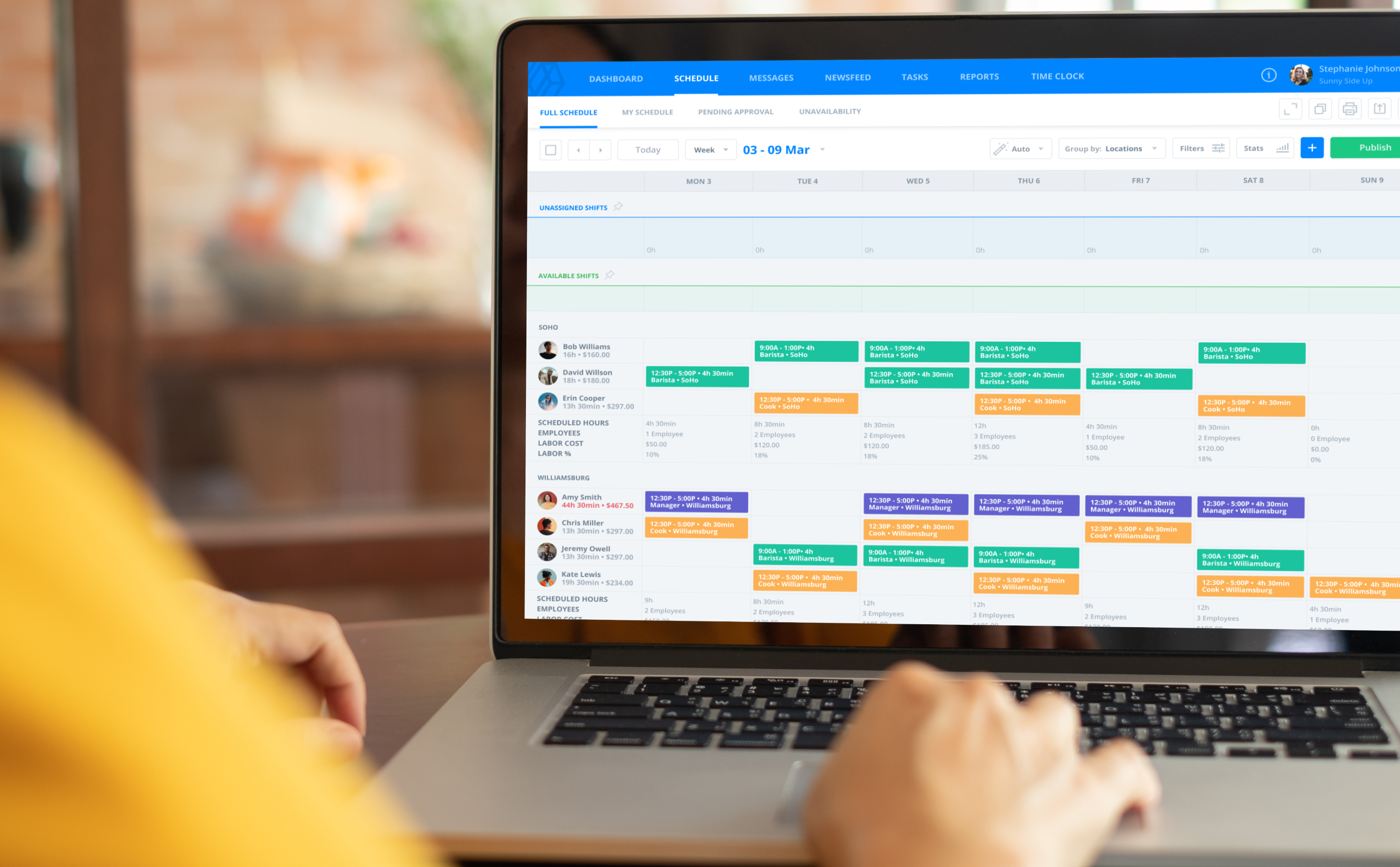
Investing in digital people management and restaurant payroll solutions, like Toast Payroll & Team management, will save you time, stress, and paper. You can also become a more sustainable business today with Sling, the #1 preferred scheduling solution for Toast customers.
4. A Digital Guest Feedback Solution
By and large, restaurant marketing is now digital-first, with brands targeting new and existing customers by posting content on social media, sending emails, and monitoring their business’ page on popular online review providers like Yelp and TripAdvisor.
Jim D’Arcangelo, Chief Marketing Officer of MomentFeed, a company that specializes in managing the digital footprint for multi-location restaurants, retailers, and service businesses, has seen an increase in food and beverage businesses investing in hyper-local mobile and online marketing. "Now that 85 percent of customers are searching on their mobile devices for things like dining options – even specific menu items like gluten-free or plant-based – restaurants must deliver immediate, relevant, accurate, and specific information. Responding to reviews – positive and negative – also helps them rank higher in [Google] search and be perceived as caring and responsive," says D'Arcangelo.
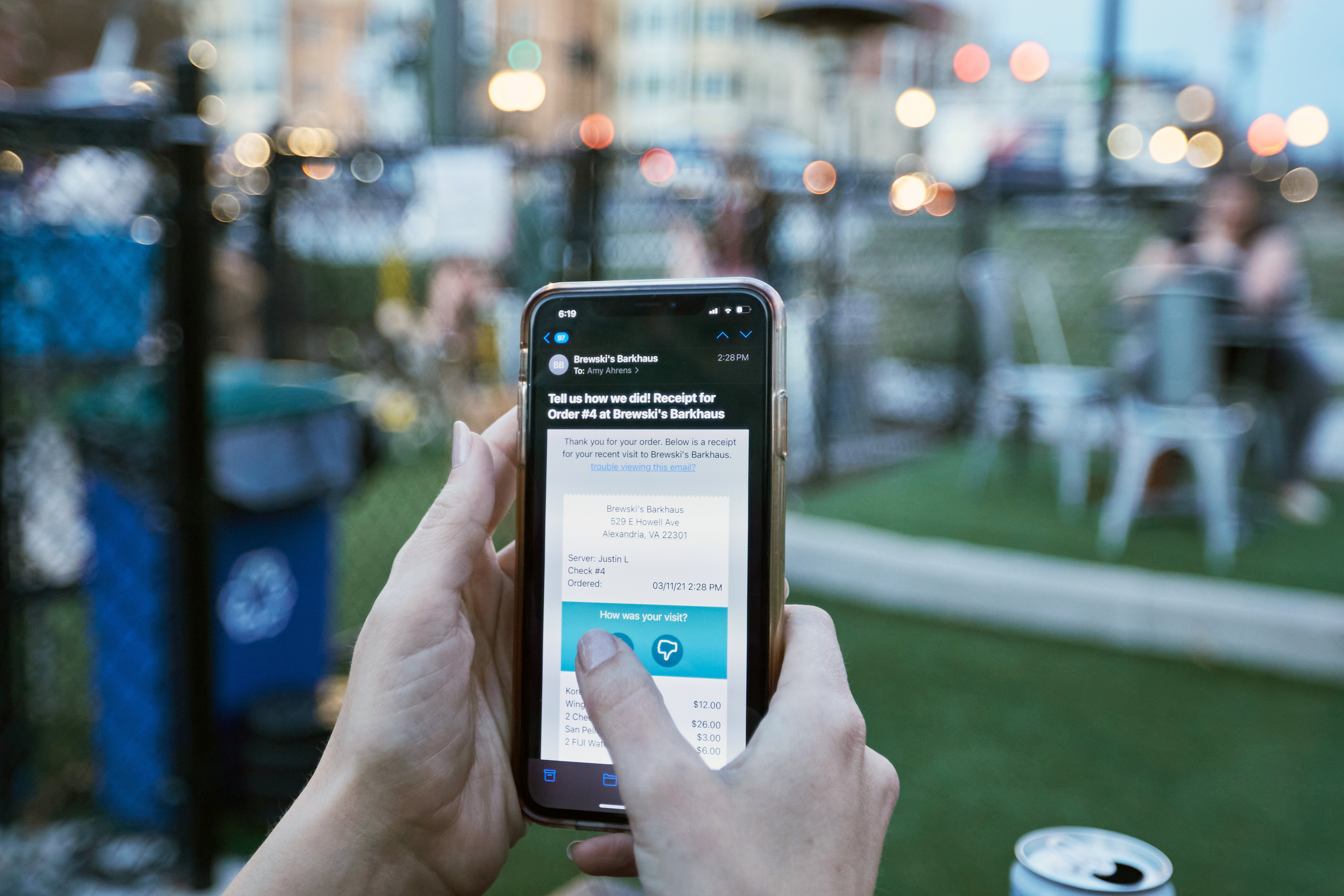
Paper comment cards have long been the most common method restaurants have leaned on to collect guest feedback during or immediately after the dining experience, but they’ve proven to be easy to ignore and a waste of paper. Investing in point of sale technology that gives you access to guest feedback in real-time will not only help reduce paper waste in your restaurant, but it will also help your restaurant’s management prevent damaging, negative reviews from popping up online. This way you can receive metrics in real-time, and immediately respond to customers online.
5. An Integrated CRM Solution
Are you still using paper to attract new customers, increase event attendance, or promote LTOs (limited-time offers)?
By integrating your CRM (Customer Relationship Management) system with your POS system you can reduce the amount of paper used to promote events, menu specials, LTOs, happy hour menus, or even upcoming changes to your hours.
Here’s a great example of how you can lean on your integrated restaurant CRM and point of sale to drive foot traffic while increasing your sustainable development:
Did you know that, according to Statista, in 2023, the market value of plant-based meat substitutes worldwide was worth 10.15 billion U.S. dollars? This figure is estimated to steadily increase over the coming years and reach roughly 16.78 billion in 2028. More consumers have become keenly aware of the impact of beef on their well-being and the environment. The thing is, meat-eaters are actually the largest group purchasing these plant-based meat alternatives, followed by vegetarians, vegans, and flexitarians.
The plant-based wave continues to roll through American restaurants. Test the waters with one or two plant-based meat alternative menu items – like a traditional patty, a bolognese, chili, or maybe even some nachos – then create a marketing campaign that targets guests who have purchased a meat dish at your restaurant in the past few months.
Then, analyze the item’s sales performance using your restaurant reporting. If your data center shows a return on your inventory investment, consider adding it to your menu full-time.
6. An Inventory Tracking Solution
According to Our World Data, food systems are responsible for around one-quarter (26%) of global greenhouse gas emissions. Not to mention, food waste can greatly decrease your restaurant business’ bottom line.
As previously stated, restaurants are responsible for an overwhelming amount of food waste, and it’s mainly a result of poor inventory management processes and back of house systems that don’t maximize the amount of product going onto plates rather than into a landfill.
If you’re going to invest in one piece of sustainable technology after reading this post, an inventory tracking solution is definitely in our top three recommendations.
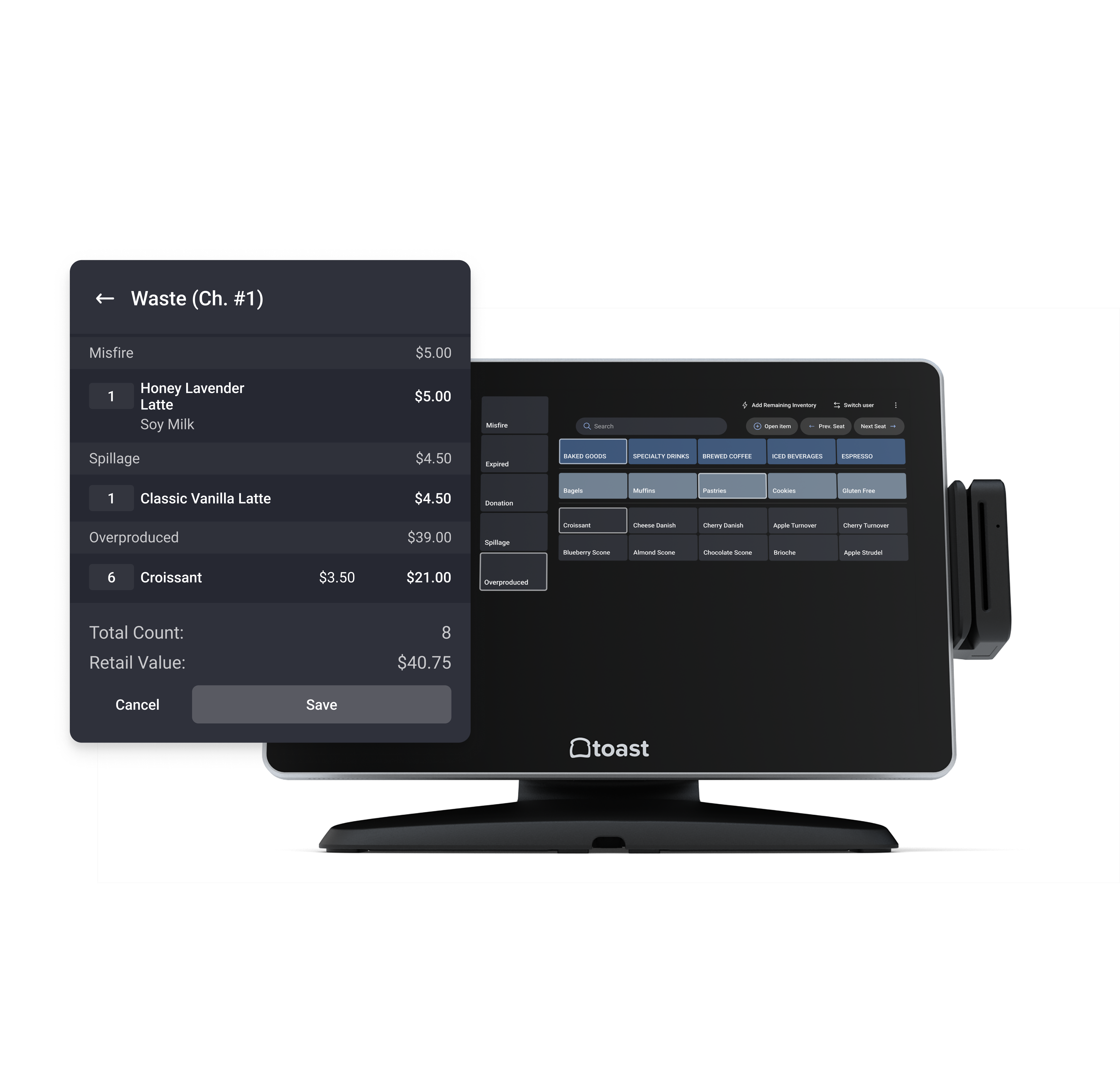 An inventory tracking system that integrates with your point of sale is a valuable tool to lean on when making purchasing decisions. You can analyze your most popular menu items and find cost savings opportunities like which ingredients you could buy in bulk to use in multiple dishes or which expensive menu items that aren’t selling (and amounting to spoilage) that you should cut from your offerings. This automated decision-making can help your business while improving your way of sustainable living.
An inventory tracking system that integrates with your point of sale is a valuable tool to lean on when making purchasing decisions. You can analyze your most popular menu items and find cost savings opportunities like which ingredients you could buy in bulk to use in multiple dishes or which expensive menu items that aren’t selling (and amounting to spoilage) that you should cut from your offerings. This automated decision-making can help your business while improving your way of sustainable living.
♪ Let’s Get Sustainable, Sustainable ♪
Taking baby steps, assisted by sustainable technology – eliminating paper, tracking and tackling waste, the reuse of resources, and selectively introducing new menu items – can gradually reduce your restaurant’s carbon footprint. Be sure your customers are aware of the measures you’re taking and why.
Fruitive, a two-location plant-based restaurant group in the Northeast U.S., trusts its employees for the best new ideas about sustainability and even uses technology to gather them. Says CEO Gregg Rozeboom, "We believe that the vast majority of good ideas come from front line employees, so the best way we’ve been able to use technology is to help with the steady flow of sustainability ideas from our entire staff. We use Typeform to receive feedback from every shift supervisor twice a day and also to send out a weekly questionnaire to gather ideas from every employee.”
The participation rate in this system is more than 90 percent.
The planet is constantly evolving, and so too should your restaurant’s list of sustainable technologies. Change can be overwhelming, but making an effort to reduce your carbon footprint and becoming energy efficient can bring in new customers and will protect our environment. We only have one Earth- let’s preserve it.
Is this article helpful?
DISCLAIMER: This information is provided for general informational purposes only, and publication does not constitute an endorsement. Toast does not warrant the accuracy or completeness of any information, text, graphics, links, or other items contained within this content. Toast does not guarantee you will achieve any specific results if you follow any advice herein. It may be advisable for you to consult with a professional such as a lawyer, accountant, or business advisor for advice specific to your situation.
Read More
Subscribe to On the Line
Sign up to get industry intel, advice, tools, and honest takes from real people tackling their restaurants’ greatest challenges.


